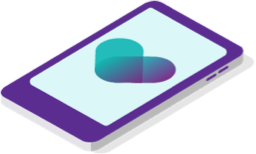Copyright 2025
Medical Security Card Company, LLC
All Rights Reserved
By Jacquelyn Buffo, MS, LPC, CAADC
June 02, 2023
New developments in medicine help us identify and treat various diseases and syndromes. One such medical complication that has received a lot of attention over the past 10 years is restless leg syndrome, or RLS. You have probably heard the term “restless leg syndrome” as the medical community has shed light on the causes, symptoms, and treatment options for this disorder. Today, you are going to gain an in-depth look at what RLS is, whose more likely to develop RLS, how it impacts people, symptoms, and ways to treat this disorder.
RLS is a syndrome that has only recently garnered attention from the medical community and society. You most likely had never heard of the term “restless leg syndrome” 20 years ago let alone had any idea what it was. Today, it is hard to watch television without seeing an advertisement for medication used to treat RLS. What’s interesting is that RLS is fairly common, so common in fact that researchers estimate that roughly 10% of the population in the United States has RLS. This estimation includes both adults and children. 10% of the population in this country means millions of people across the United States struggle with issues related to RLS.
RLS, also known as Willis-Ekbom Disease, is categorized as both a neurological disorder and a sleep disorder. Symptoms of RLS most commonly occur near the end of the day and during the night when you are asleep. The symptoms can cause significant disruption in your ability to fall and stay asleep, which is why it is also categorized as a sleep disorder. It is often difficult to go back to sleep once the symptoms of RLS have disrupted your sleep and caused you to wake up.
To get a comprehensive understanding of what RLS is, it is important to have a general understanding of what a neurological disorder is. A neurological disorder is a disorder of the brain, nerves, or spinal cord which comprise the nervous system. There are a vast number of neurological disorders that have been identified. More specifically, there are more than 600 neurological disorders, and symptoms of neurological disorders vary. Symptoms are dependent on several individual factors such as genetics and environmental influences as well as the type of neurological disorder you have.
Neurological disorders can impact the way you talk, the way you move around, your ability to learn, your ability to breathe, and your ability to swallow. Your memory, your senses, and your mood/mental health can also be impacted by neurological disorders. Symptoms can range in intensity and severity. Some common neurological disorders include:
Symptoms of RLS vary from person-to-person and are also dependent on individual and environmental factors such as lifestyle habits, genetics, and other variables. One of the most common symptoms is an insatiable urge to move your legs and lower limbs along with unusual sensations in your lower limbs. The sensations in your lower limbs and legs can feel like several things including:
The above-mentioned sensations can be felt in your upper body, although that is uncommon as they are usually felt on both sides of the body.
Symptoms of RLS vary each day and are different for each person. In severe cases, RLS symptoms can occur multiple times a week and significantly disrupts sleep whereas more mild symptoms occur once a week or less. Other characteristics of RLS symptoms are listed below.
Generally, symptoms of RLS become more serious over time and during the early stages of RLS, it is common to have symptoms disappear for some time and re-emerge later on.
Periodic limb movement of sleep is described by involuntary leg jerking and twitching that occurs roughly every 15-40 seconds throughout your sleep cycle. RLS and PLMS are distinct from one another and most individuals who have PLMS do not experience RLS. However, it is estimated that over 80% of individuals with RLS experience symptoms of PLMS.
As with most disorders, it is difficult to identify a direct “cause” for RLS. However, researchers have found that certain factors may make you more likely to develop RLS. Factors that may make you more likely to develop RLS include:
Furthermore, some common medications can exacerbate RLS symptoms including psychotropic medications used to treat mental health disorders, medications that contain antihistamines, and certain anti-nausea medications.
If you think you may have RLS, talk to your doctor about the symptoms you are experiencing. Your doctor can give you a comprehensive medical and physical examination and will use five different benchmarks to determine whether or not you meet the criteria for RLS. The following criteria are used by medical professionals to diagnose RLS:
While there isn’t a single test that is used to determine if you have RLS, your doctor may conduct bloodwork to rule out any other medical complication that may be causing your symptoms.
While researchers have made advances in the understanding of RLS, a lot is still unknown about the syndrome. Scientists are studying the role of neurotransmitters and hormones in the development of RLS and are working to advance their understanding of how the environment and genetics (epigenetics) influence the development of RLS. What we do know about RLS so far is that the symptoms are manageable.
Unfortunately, there is no cure for RLS. However, RLS can be treated by a combination of interventions including lifestyle changes, medication, and therapy. If you have been diagnosed with RLS, talk to your doctor about treatment options that are suitable to you and your needs.
Common treatment options for RLS include:
If you are taking prescription medication for restless leg syndrome or any other health condition, ScriptSave WellRx can help you save money on your prescription drugs. ScriptSave WellRx can help save you up to 80% by using the free prescription drug card. The free prescription drug card is accepted nationwide at pharmacies near you.
Jacquelyn Buffo began writing at the age of 10 when she won a county-wide essay contest explaining why her mother is worth her weight in gold. Since that time, she has written for several newspapers and a health and wellness blog. Her education and experience is in mental health and addiction. She is a licensed counselor and currently provides therapeutic services on an outpatient basis. Her counseling and substance abuse experience includes inpatient residential, in-home, and early recovery counseling. She is a certified addiction specialist and is working on obtaining her certification in Dialectical Behavioral Therapy. She also specializes in working with pregnant and post-partum women and has received advanced training on women's health.
Resources:
National Institute of Neurological Disorders and Stroke. (2023). Restless leg syndrome.
National Library of Medicine. (2014). Neurological diseases.

For your convenience, use the ScriptSave® WellRx mobile app. Now savings are well in hand, right at the pharmacy counter. Save on your family's prescription medicines.
Learn More
Your choice. Get a ScriptSave WellRx Savings Card. Or Download the free mobile app from the App Store or Google Play Store
Get A Card
ScriptSave WellRx Grocery Guidance leverages leading-edge nutritional data science to help you know which food products on your grocery store shelf are truly good for YOU.
Healthy Foods For YouTags:

February 25, 2025

February 20, 2025

November 07, 2024